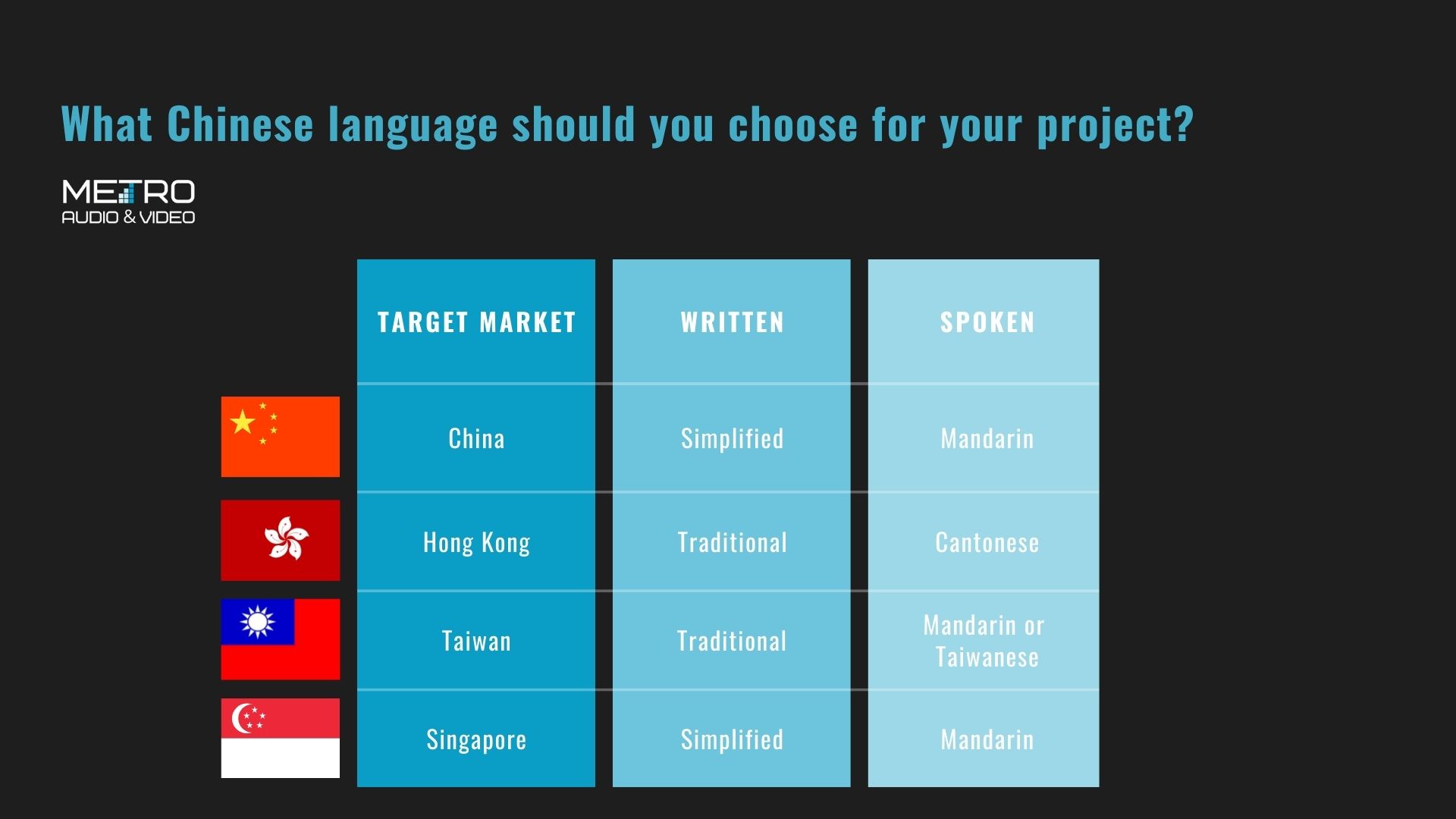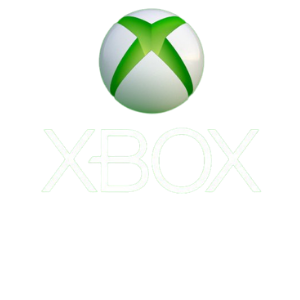Are you starting a Mandarin voice over project and unsure whether to use Simplified or Traditional Chinese? Understanding the differences between the two is essential for effectively connecting with your target audience. Let us guide you through the details and help make sure your Mandarin voice over is a success! We’ll start by looking at what sets Simplified and Traditional Chinese apart and then show you how to pick the one that fits your project’s needs perfectly!
A Sample Of Our Mandarin Voice Over
Choosing Between Simplified or Traditional Chinese
When someone says “Chinese language,” it’s a bit like saying “music” — it’s very broad. China isn’t just a massive country with a population soaring into the billions; it’s a rich mosaic of cultures and languages, each with its unique communication preferences.
In the world of Chinese, both in writing and speaking, there’s a mix of formal and informal styles. And the spoken language? It splits off into many dialects, each one deeply connected to its own region.
Chinese Dialects
When you’re picking the right Chinese voice over talent for your project, it’s really important to know who your audience is and what kind of Chinese they speak. Mandarin and Cantonese are popular dialects. Mandarin is what most people speak in Mainland China, Taiwan, and Singapore, but remember, there are different accents within Mandarin.
If your project is for Mainland China, you’ll probably want a voice actor who’s a native speaker of Standard Mandarin (Pu Tong Hua), so everyone gets your message clearly, without any regional accent confusion.
But if you’re aiming at Taiwan, then you might be looking for a voice talent who can speak Mandarin with a Taiwanese dialect, or maybe even with the Min Nan accent. This is where working with a specialized voice over agency (like us) comes in handy. We know all about these subtle differences and can help you make the right choice.
Cantonese is another story. It’s spoken in Guangdong province and Hong Kong and is different from Mandarin. We’re going to talk more about Cantonese in our next blog, so keep an eye out for that!
And let’s not forget about the other dialects like Fuzhou, Xiang, and Gan. They add more variety to the mix in places like Shanghai, Western China, and Hunan province. If you’ve been following our previous discussions on localizing your business for China, you know there’s a lot to consider!
Traditional vs Simplified Chinese
When it comes to Mandarin, you’ll quickly notice there’s a big thing to figure out: Traditional vs. Simplified Chinese. It’s incredibly important to understand the difference between the two, as it will affect the way you market to your Chinese audience.
What is Simplified Chinese?
Simplified Chinese was established by the Chinese Communist Party (CCP) in 1949 as an official language. The CCP believed simplifying the language would increase literacy in the population. Simplified Chinese is based on the traditional form, but it has fewer characters. It also utilizes fewer strokes per character.
To achieve this, the CCP standardized many already-simplified characters in vernacular use. They also created some of their own. In addition, they established simplified characters with many meanings in order to shrink the language.
Simplified Chinese users have an average knowledge base of around 8,000 characters. The CCP also created an official “List of Commonly Used Standardized Characters.” It consists of a little under 300 characters.
Like China, Singapore uses Simplified Chinese. However, as we mentioned above, territories including Taiwan and Hong Kong do not. Most people living in Taiwan and Hong Kong can’t read Simplified Chinese.
We created this infographic to help you remember what spoken and written language you might choose based on your target market:

What is Traditional Chinese?
Traditional Chinese is a formal and complicated language that looks beautiful on paper. There are over 50,000 detailed characters in the language. Modern dictionaries typically only list about 20,000 characters. The use of Traditional Chinese depends on the region and situation. As a rule, Taiwan and Hong Kong use Traditional Chinese in writing. Other regions use it on a situational basis.
For example, people in mainland China may use Traditional Chinese characters when practicing calligraphy or designing logos. Generally, people living in mainland China can read Traditional Chinese, even though Simplified Chinese is primarily used in China.
When it comes to verbal language, Traditional Chinese is spoken differently in Taiwan than it is in Hong Kong. Word choices and grammar vary greatly. Because of this, you’ll never want to use the same voice over script for an audience in Taiwan as you do for an audience in Hong Kong.
Expanding Your Business Into China
When you’re looking to expand your business into Chinese markets, there are a few key steps to consider to make it work:
English to Chinese Translation: Start by making sure your translation team knows exactly what you’re aiming for. Tell them about your target market and the specifics of your business goals, so they translate your content in a way that fits right in with the local culture.
Chinese Localization: China is huge and varied, so you’ll want to adjust your content for different regions. This helps your brand click with local customs and language quirks, which is especially important for content aimed at local employees or customers.
Choosing the Right Chinese Voice Actor: The people you pick to voice your content can really impact its success. It’s all about finding Mandarin voice actors who get your audience and what they like, considering the cultural nuances of the groups you’re targeting.
Chinese Narration: Good narration can make a big difference. It’s about using the right tone and style that matches what your audience expects, making your message hit home.
Chinese Subtitles: For any video or multimedia content, having accurate subtitles is a must. They need to be spot-on to keep your content’s message clear.
Chinese Captions: Adding captions can help by providing extra info or highlighting key points. It’s about making your content more engaging and easier to follow.
Graphics and Text: The look of your content matters too. Making sure your visuals and text match your audience’s tastes can help make your brand more recognizable and your message clearer.
Simplified or Traditional Chinese: A Closing Thought
Over the last 20 years as a leading voice over agency, we’ve had the privilege of working on a variety of projects that span the spectrum of the Chinese language, from Mandarin e-learning modules and targeted Chinese marketing campaigns to immersive Chinese language audiobooks and detailed Mandarin corporate explainer videos. Our extensive portfolio showcases our deep involvement across diverse industries and our commitment to delivering excellence in every project we undertake.
We really hope this blog has shed some light for you on the Chinese language and its dialects! With this insight, picking the right Chinese voice for your project should be easier. And if you need some help, get in touch with us. We’re always here for you!
*We would like to thank our longtime Chinese voice over talent Zhenyu Tan for his contribution to this blog! If you would like to know more about the difference in writing between Traditional and Simplified Chinese read his article.






